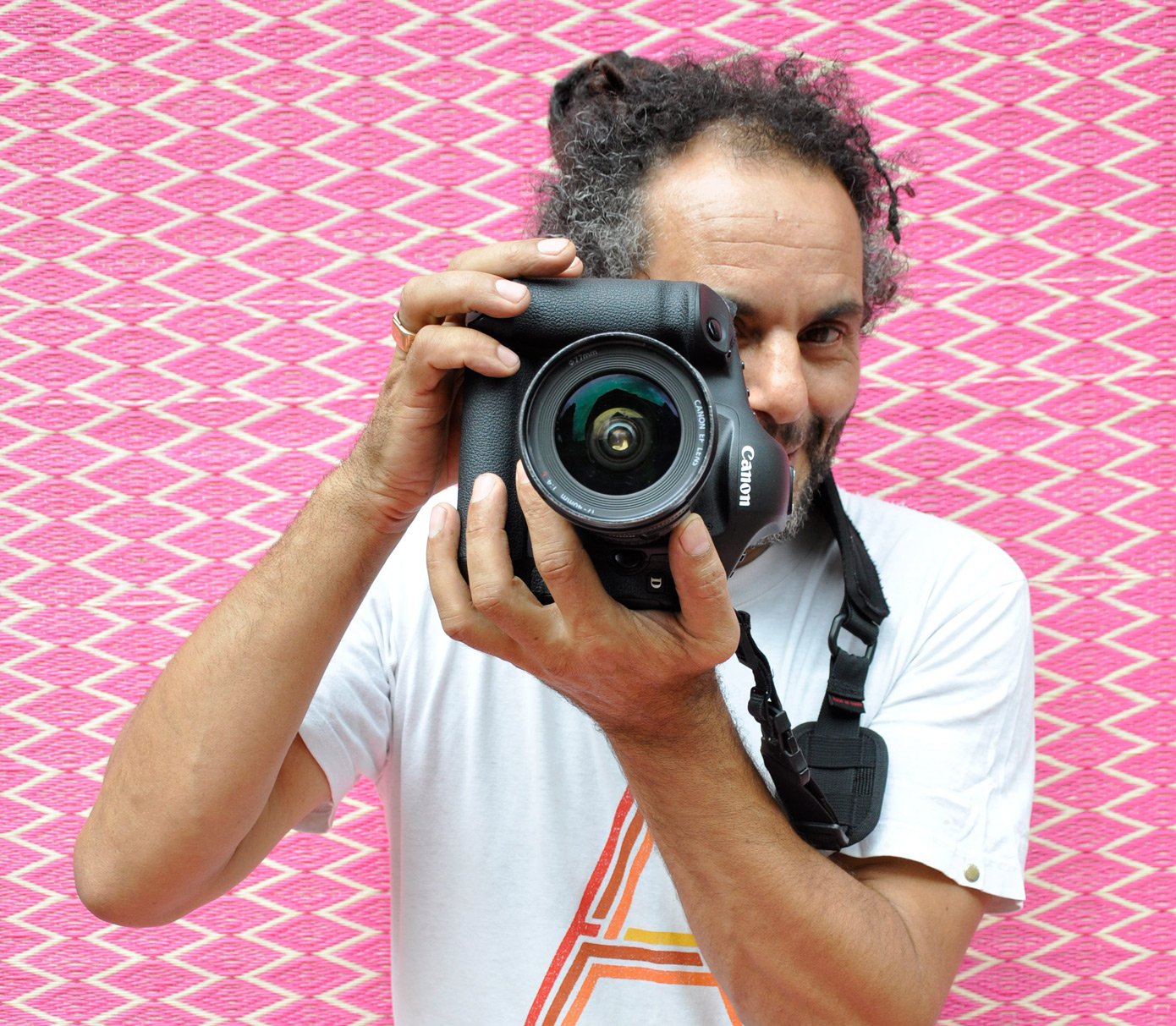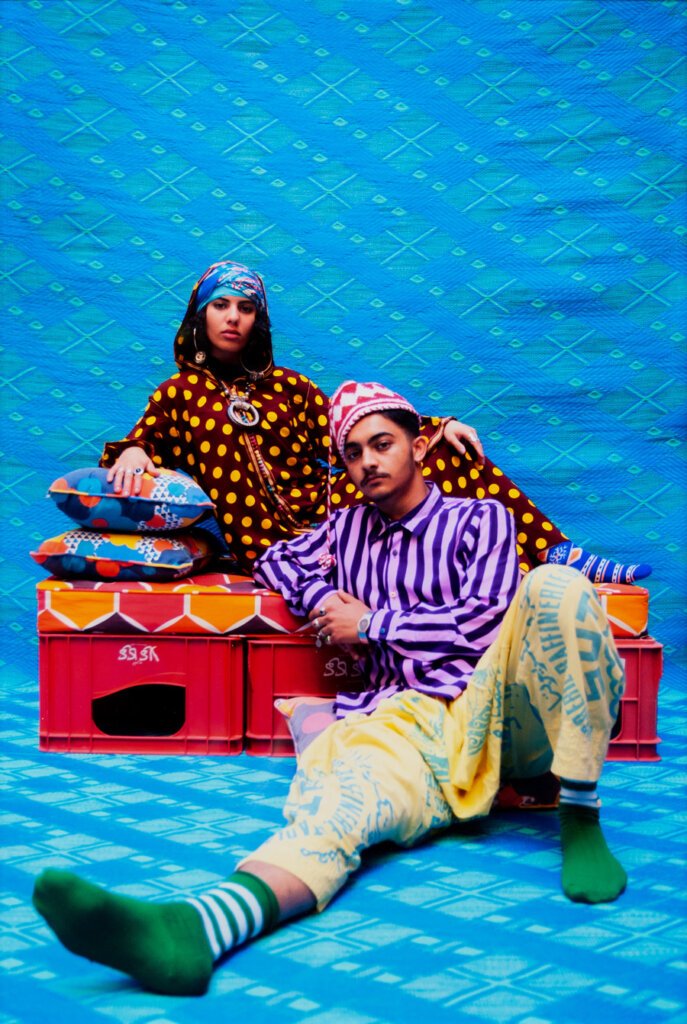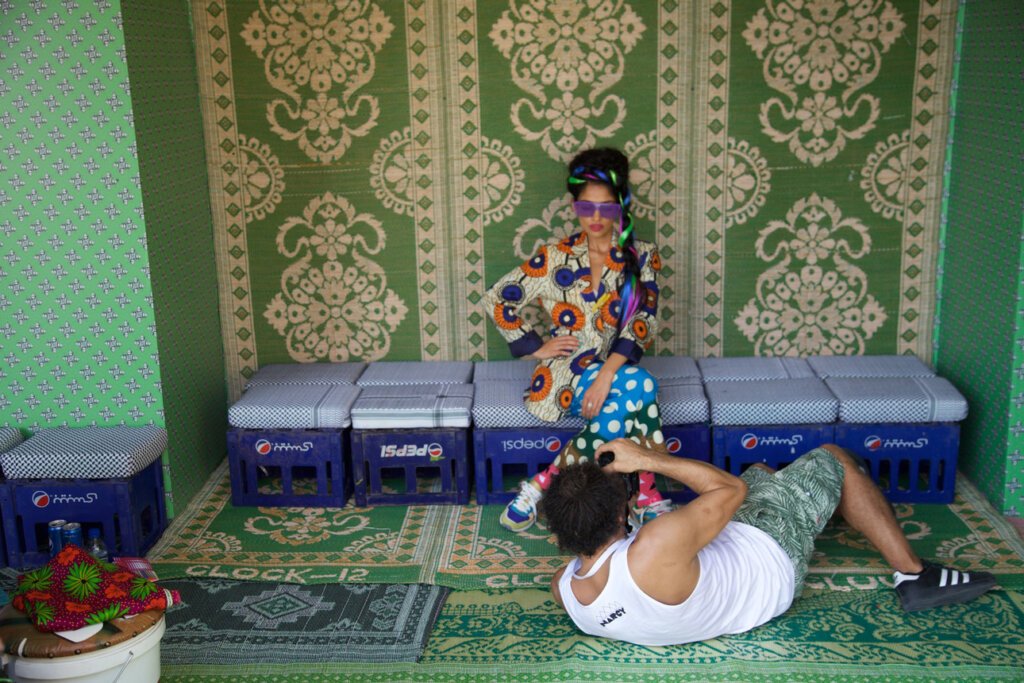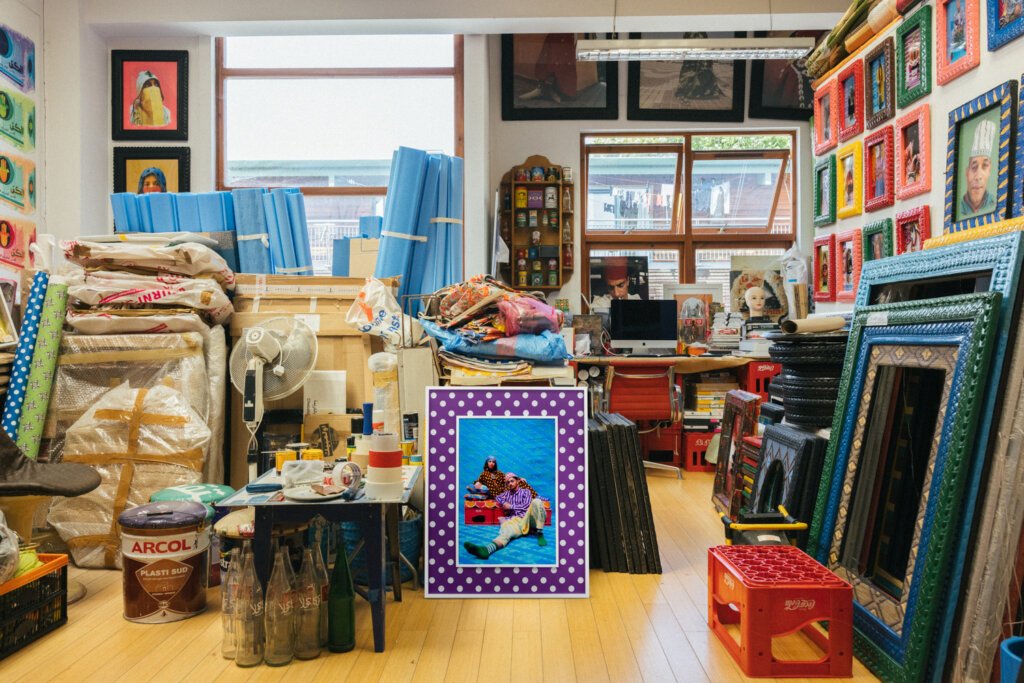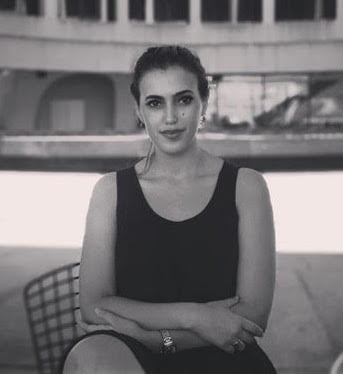Inspired by cross-cultural Western and Afro-Arab influences of music, fashion, and pop culture, Hassan Hajjaj now applies his maximalist scenes to young emerging creatives in Morocco. Many know him from his work with major celebrities and his knack for visual accessibility through these influences, filling the literal and proverbial frame around his sitters with scenes of London and Marrakech-influenced street style.
Hajjaj effortlessly engages audiences with his bold, yet egalitarian aesthetic, functioning as both an insider and outsider of this realm, as someone who understands the fleeting, yet iconoclastic magnetism of celebrity (Hajjaj is often called the Moroccan Andy Warhol, a moniker he turned on its head with the launch of his clothing brand, Andy Wahloo, which phonetically translates to “I have nothing” in the Moroccan Darija dialect) and the beauty of an everyman. Immediately recognizable, the mesmerising force of his punchy textiles and regal, almost defiant, poses of his subjects do more than draw a viewer into his portraits; we are invited to interact with every pattern, adornment, and object with curiosity and sincerity.
Indeed, Hajjaj understands what so many North African immigrants operating in arts and culture, fashion, and music feel: that privilege and burden of liminal living, in between the glossy and the humble. In layman’s terms, it’s the difference between those who stay at The Mamounia in Marrakech for the city’s notable film festival, and those who embellish those same tourists’ hands with henna in Jemaa el-Fnaa—and the rest of us in between.
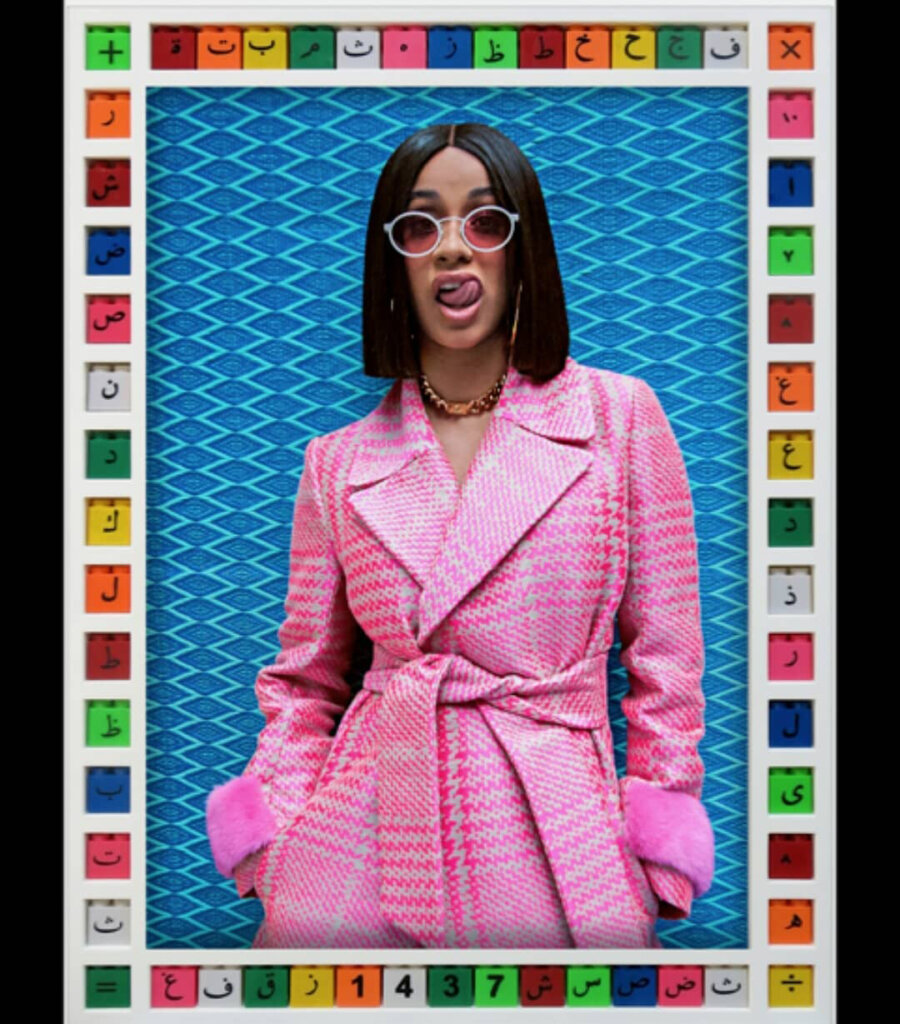
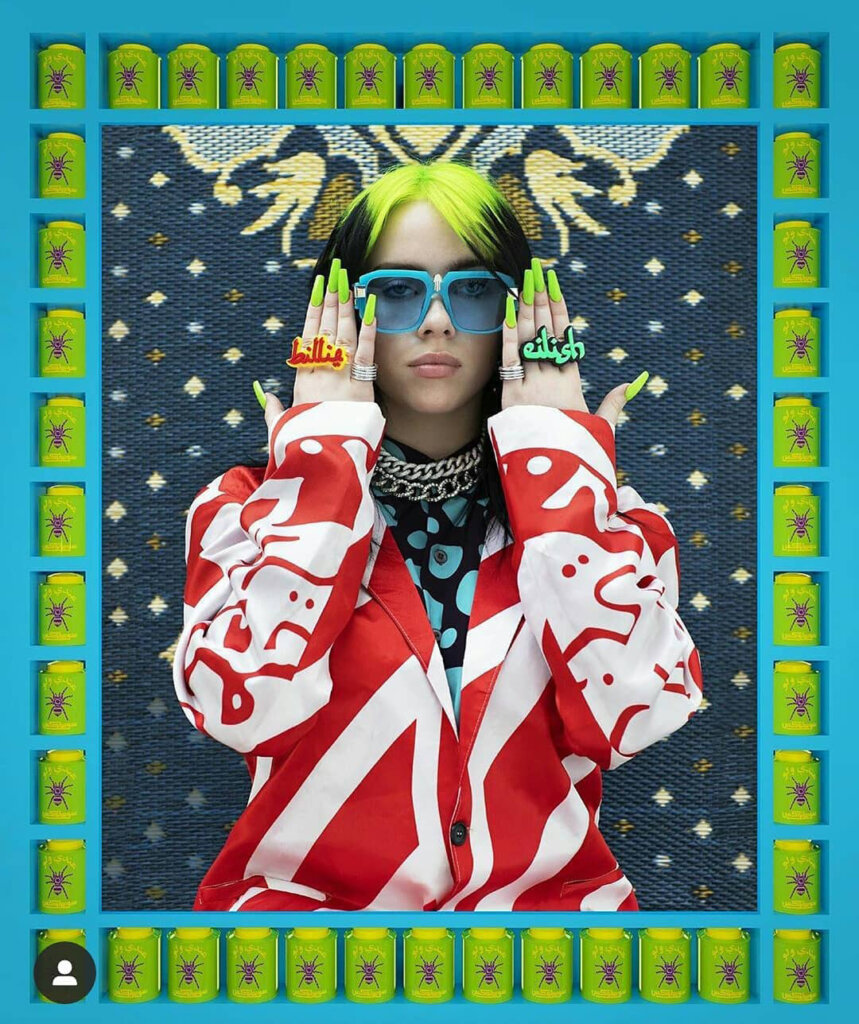
Courtesy of Hassan Hajjaj @hassanhajjaj_larache
All are one in Hajjaj’s pop-colour world, as evidenced in his Rockstars series which features the likes of Cardi B and Billie Eilish along with emerging Moroccan creatives.
Launched in early September, the limited photographic print editions of Yazid & Rania (2018/1439) sold by Avant Arte symbolise Hajjaj’s commitment to these artists while revisiting his own creative journey. The project flourished organically, as do so many of his collaborations with other creatives, creating space, as Hajjaj notes, for future opportunities of mentorship. However, the notion of mentorship is a symbiotic one, as Hajjaj is inspired by the ever-flourishing hotbed of Moroccan artists who look up to him.
“When I was creating this edition with Avant Arte, I wanted to tell my story: about my Moroccan heritage and my body of work. But I also wanted to talk about the next generation: these young creatives coming up in the world,” says artist Hassan Hajjaj. “As it turns out, it’s not just young people who are learning from me, I learn so much from them: they are the future.”
Q: What role do young creatives play in your work? How do they inspire you?
A: Young creatives bring a fresh energy to my work, it’s about now and then – they inspire me as an artist. My work has always been, without me realising it at first, about documenting my times and they are the ones coming to the stage and I’m happy to be part of their journey, learning from them also.
Q: How do you choose your “muses”?
A: It happens very naturally, it’s all about their energy, their style, and their work, about connecting with them or not.
Q: What challenges do you think young Moroccan artists—living both in Morocco and outside the country—face today?
A: What is hard for the Moroccan artists, living in Morocco, is often linked to finances: not having access to funding, materials, equipment; outlets for them to show their work. Also getting visas to visit the world. For Moroccans living outside, one can sometimes feel like a misfit, even in Morocco they become outsiders. Regardless of location, a big challenge facing Moroccan artists is the need to develop a language of their own. The language of the Western art scene, which is contemporary art, has become irrelevant in my view.
Q: What advice do you have for emerging artists?
A: Work hard. Don’t give up; believe in yourself and don’t try to do art for fame or money as it’s the wrong thing to do—most of the time you’ll be disappointed.
Q: Walk us through your creative process. Where does it begin and how does it manifest?
A: It starts with the sitter(s)—the subject of the photography—and from there it comes easy as I get inspired by them, their style and work with them in creating the style of the photos.
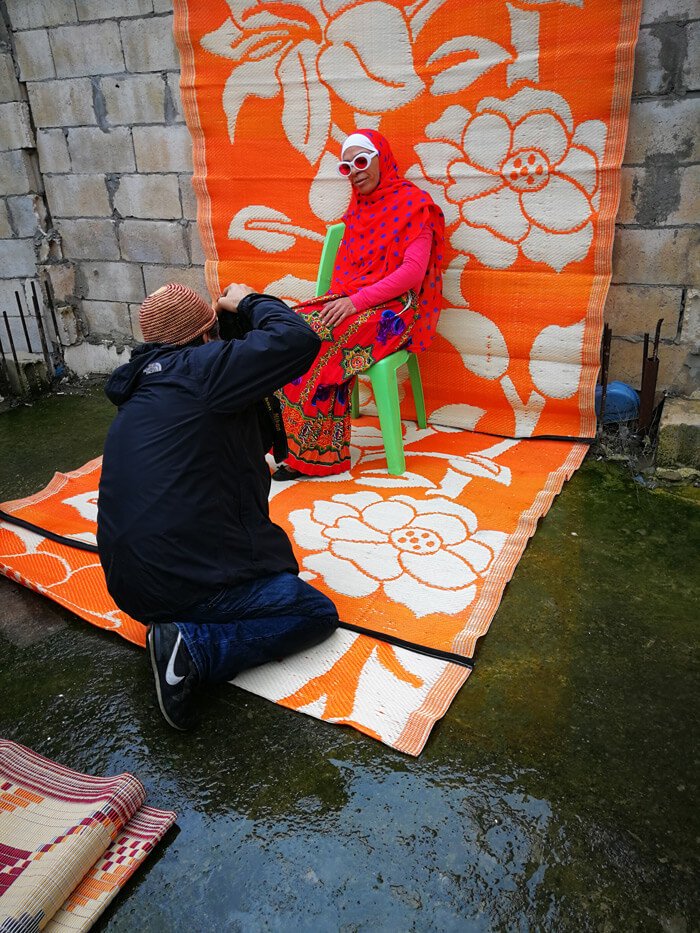

Q: What is the significance of textiles, fashion, and design in your photographs?
A: Adding textures and layers to my work has been a great way to communicate with my audience, whether they relate to it or recognise it from somewhere they’ve been or someone they know. I believe it’s made my work more accessible.
Q: How have London and Morocco’s music scenes influenced your practice?
A: Majorly, as it opened up my music taste and to be able to meet so many of my rockstars through music. Music is one of the most important influences in my work apart from people and where I’m from. Coming to London, my music tastes opened up through discovering so much from friends from other parts of the world. This love of music has also enabled me to meet so many of the subjects of [the] My Rockstars series.
Q: Why is it important for you to incorporate the Gregorian and Hijri calendars when dating your work?
A: Well, firstly it’s part of who I am and, secondly, I thought it was important to highlight that there is never one standard, there’s no uniformity in the world. Just like we use inches and cm to measure, or UK/US shoe sizes, it’s important to remember that we are different, and it would be thoughtless to impose one standard over another. It’s also a reminder for myself as it’s easy to fall into what I consider “normal” or my standard.
Q: For many, a frame is just as important as the photograph within it. Why do you like to incorporate recycled and found objects into your frame making? Why do you make your own frames by hand?
A: The frame is indeed an inherent part of the artwork. At first, I made it like this to create a sort of zellige around the photograph as mosaic and tiles are an important craft where I’m from. Recycling has always been part of my life as I grow up with not very much so you’d have to use what is around you. I was also collecting cans because I love the graphics and also I was happy to share some of my country’s tastes to my friends who did not go to Morocco. Then I used the products to give a clue or relate to the sitter in the artwork, adding another layer of expression in the artwork. And I love the souk, I love the relationship with street sellers and transforming their goods, which are often looked down upon, into desirable pieces.
https://www.instagram.com/hassanhajjaj_larache/
©2021 Hassan Hajjaj, Jenny Fremont


